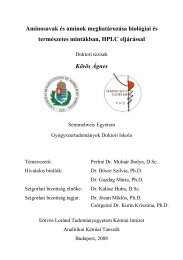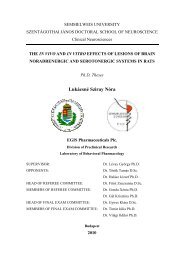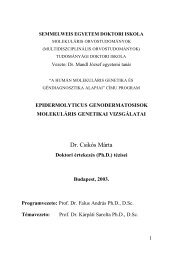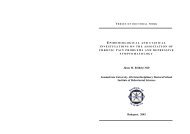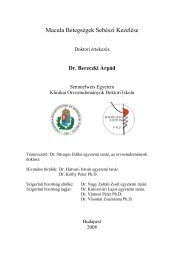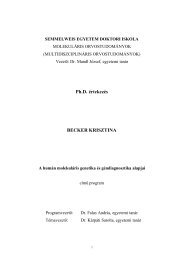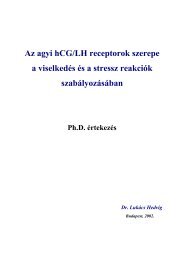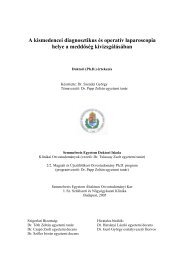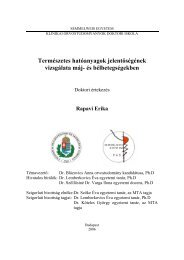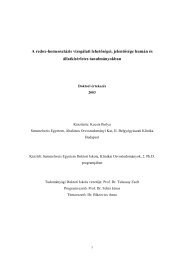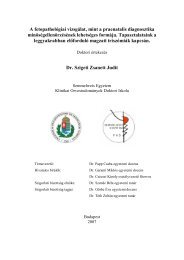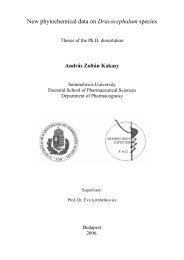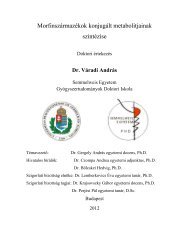GLYCOSIDES IN Viola Tricolor L.
GLYCOSIDES IN Viola Tricolor L.
GLYCOSIDES IN Viola Tricolor L.
Create successful ePaper yourself
Turn your PDF publications into a flip-book with our unique Google optimized e-Paper software.
CHAPTER 2: <strong>IN</strong>TRODUCTION<br />
groupinthe3-position. Sincemostflavonoidsareelectroactive duetothepres-<br />
ence ofphenolicgroups, electrochemical detection can alsobe used [82, 87].<br />
2.3.3 Identificationandstructuralcharacterization<br />
Today, LC-MS/MS is the most important technique for the identification of<br />
target flavonoids and the structural characterization of unknown members of<br />
this class of compounds. As regards target analysis, tandem-MS detection has<br />
largely replacedsingle-stage MSoperation becauseofthe much better selectiv-<br />
ity and the wider-ranging information that can be obtained. Dependingon the<br />
nature of the application, additional information is derived from LC retention<br />
behaviour, and UV absorbance and, occasionally, FLU or ED characteristics,<br />
due comparison being made with standard injections and/or tabulated refer-<br />
ence data. In studies on the characterization of unknowns, a wide variety of<br />
LC-MS/MS techniques is usually applied next to LC-DAD UV for rapid class<br />
identification. Inaddition, LC-NMRoften turnsouttobeanindispensabletool<br />
to arrive atan unambiguous structural characterization.<br />
2.4 LC-MSin thecharacterizationof flavonoids<br />
Structural analysis of flavonoids is essential in the search for new biologically<br />
activecompoundsandinthedevelopmentandqualitycontrol ofnaturalprod-<br />
ucts. Determination of the absolute structure of flavonoids is a complicated<br />
task, which mostly requires the combination of advanced techniques, e.g., 1 H-<br />
and 13 C-NMR-spectrometry, 1 H- 1 H-correlated spectroscopy, mass spectrome-<br />
try, and/or X-ray cristallography requiring large amounts of adequately puri-<br />
fied sample[87]. Flavonoids, however, areusually presentin acomplex matrix<br />
of plant extracts, thus generally difficult to isolate in higher quantities. To alle-<br />
viate this drawback, hyphenated techniques, such as LC-MSand LC-NMR can<br />
be applied. Both techniques have advantages and disadvantages [82, 88–90].<br />
LC-MS represents a rapid and easy-to-access methodology with high sensitiv-<br />
ity and low sample demand. LC-NMR provides more structural information<br />
(even about the stereochemistry of glycosides), but only a few laboratories are<br />
equippedwith such high endinstrumentation. Besides,due to itslow sensitiv-<br />
ity, foran LC-NMRexperimentmore sample isrequired.<br />
17



